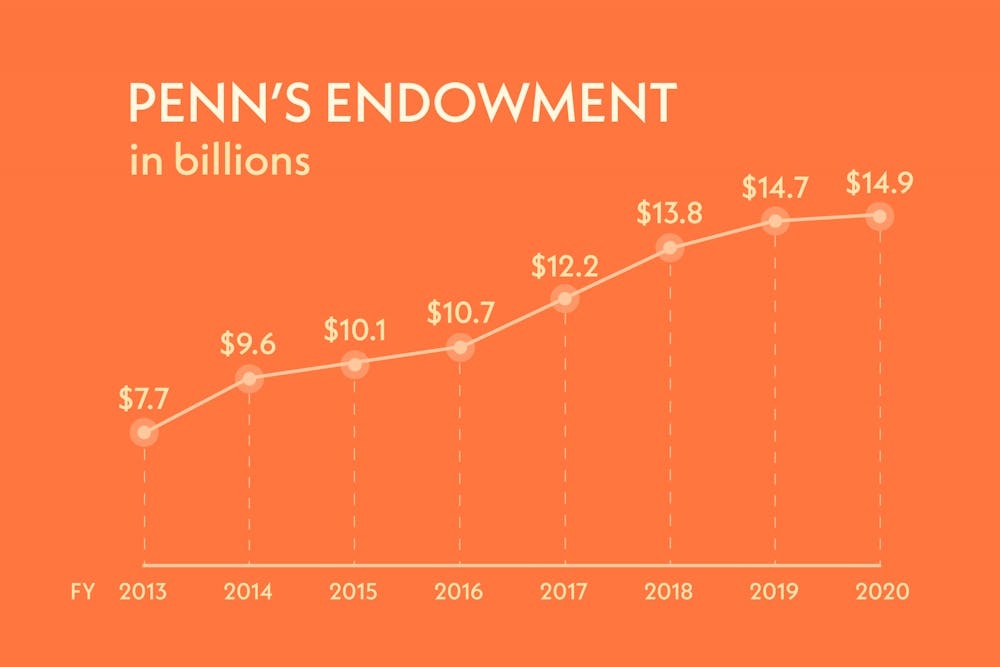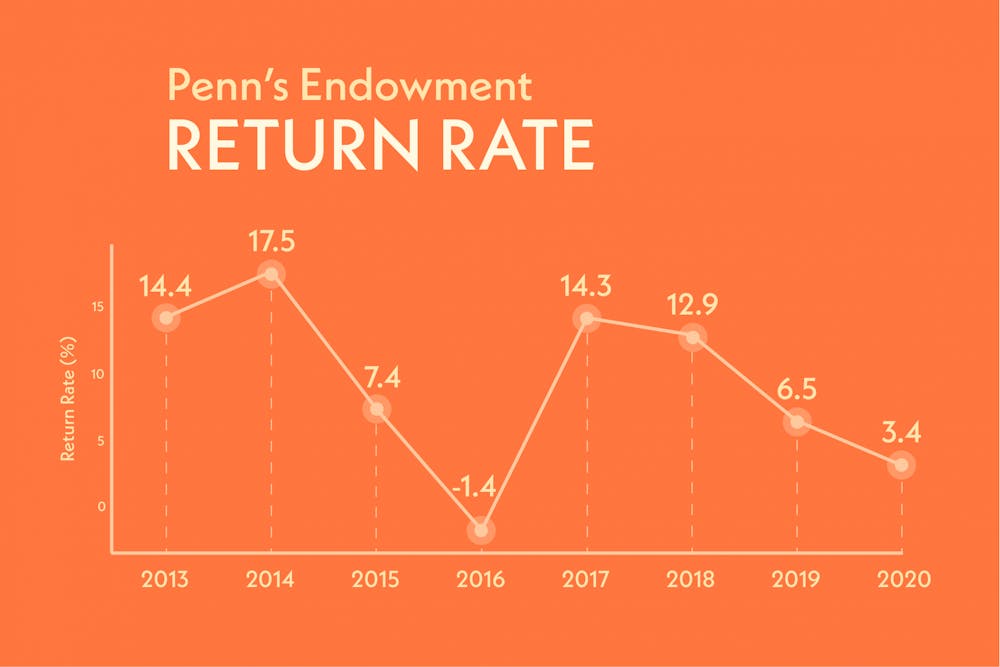
Despite incurring financial losses because of the COVID-19 pandemic, Penn’s endowment has increased from $14.7 billion to $14.9 billion for fiscal year 2020.
The endowment's growth this year comes from “investment returns, spending distributions, new gifts, and internal transfers," according to Penn’s Office of Investments. This year's endowment had a return rate — the percent of growth from investing the endowment funds — of just 3.4%, continuing the downward trend in return rates since fiscal year 2017 which recorded a 14.3% return rate. The endowment return rates were 12.9% and 6.5% in 2018 and 2019, respectively.
The University allocates 54% of the endowment to instruction, 23% for health care, 15% for student aid, and 8% for research, academic support, and other purposes. The percent allocated toward instruction increased by 2% from last year's endowment allocation, while the allocation for health care and student aid decreased by one and two percent, respectively.
Approximately $11.4 billion supports the University's academics and $3.5 billion supports the University of Pennsylvania Health System.
Most of the endowment is invested in the Associated Investments Fund, a single investment vehicle which holds more than 6,000 of the individual endowment funds, according to Penn's Office of Investments. Only 18% of Penn’s academic component of the endowment is unrestricted, which the University invests into its highest priorities as outlined in the Penn Compact, such as undergraduate financial aid and other student and faculty support.
"The investment goal of the AIF is to achieve high, steady, absolute returns while protecting against any permanent loss of capital," according to Penn's Office of Investments.

Whereas the previous year's endowment saw a 6.5% increase from the $13.8 billion reported in fiscal year 2018, this year's endowment only saw a 1.4% increase from the previous fiscal year.
Earlier this spring, Penn suffered a $47 million loss due to the COVID-19 pandemic and is projecting a $91 million budget deficit for fiscal year 2021. The University instituted cost-cutting measures this year, including restrictions on overtime work, elimination of mid-year salary adjustments, and a University-wide hiring freeze on all positions except grant-funded positions approved by the “highest level of the School/center."
Penn also implemented a limited merit increase program which prevents employees with salaries above $70,000, which include officers, deans, and vice presidents, from an annual wage or stipend increases for the 2021 fiscal year.
Despite being the highest-paid president in the Ivy League, Penn President Amy Gutmann is one of few Ivy League presidents who will not take a pay cut from her salary — which totaled $3.6 million in 2017 — this academic year.
Earlier this semester, Penn furloughed over 100 subcontracted dining workers as a result of the online semester. The School of Arts and Sciences also recently announced it will pause admissions for most school-funded Ph.D. programs for the 2021-2022 academic year due to the COVID-19 pandemic’s impact on the school’s finances.
Penn annually pays out approximately 5% of each endowment fund to support a range of purposes such as academic instruction and student financial aid, according to Penn’s Office of Investments. In fiscal year 2020, the endowment provided $655 million to the University budget.
The Daily Pennsylvanian is an independent, student-run newspaper. Please consider making a donation to support the coverage that shapes the University. Your generosity ensures a future of strong journalism at Penn.
Donate







